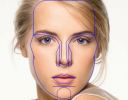IntMath Newsletter: Open source textbooks, math of beauty
By Murray Bourne, 14 Jan 2014
14 Jan 2013
In this Newsletter:
- Resource: Open source textbooks
- Updated math interactive - Math of beauty
- IntMath Polls
- Math puzzle
- Friday math movie - Sand images drawing machines
- Final thought - School for the soul
0. Greetings
Happy New Year, everyone! I hope 2014 is kind to you, and that you learn a lot.
I usually don't blog much during the end of year period, mostly because people are not very interested in math then! (How do I know? See Thanksgiving for less math where I show what happens to IntMath traffic each festive season.)
IntMath recently passed some milestones:
- There are now over 13,000 people subscribed to the IntMath Newsletter. Welcome to all of you, especially the newcomers!
- There are over 4,000 people following IntMath on Twitter. I used to think Twitter was a useless time sink, but now that I'm part of an educational community that shares lots of interesting and useful things, I've changed my mind.
I love hearing from readers and was delighted to receive this from Rachel in Ireland:
"Dear Murray
I have never met you in person, but you need to know how much help your IntMath Newsletters were to me whilst I was studying. I returned to college as a mature student so needed every bit of assistance I could get, and found that through your newsletter and site. Thank you so much."
You're very welcome, Rachel!
On with the Newsletter.
1. Resource: Open source textbooks
Unfortunately, this resource has since disappeared.
2. Updated math interactive - Math of beauty
This page has always been one of the most popular on IntMath. I updated it so it also works on tablets and (large?) smart phones.
 |
This interactive allows you to place a mask over the photos of "beautiful" people, and see how close their face is to the "ideal". See: Math of Beauty (you'll find the mask interactive about 1/2 way down the page) |
Skin deep? On the page, I have a disclaimer that says "inner beauty is more important than external beauty.". As I said, this is not a serious piece of science!
3. IntMath Polls
Studies show one of the biggest impacts on student learning is the quality of the teaching. This poll is consistent with that finding.
The poll during Nov/Dec 2013 asked readers:
What would have the biggest positive impact on your enjoyment of school?
Better teachers: 44%
Learn more about real life issues: 34%
Reduce bullying: 11%
More technology: 11%
Total votes: 1200
Current IntMath Poll: Considering the above result, the current IntMath Poll asks what teachers should do to improve learning outcomes. You can answer on any (inner) page of IntMath.com.
4. Math puzzles
The puzzle in the last IntMath Newsletter asked about the least 2 positive integers with certain remainders.
The question I asked is actually very old. It was posed by the Chinese military general, strategist and philosopher Sun Tzu in the 1st century CE. (Yes, the guy who wrote Art of War.)
Correct answers with explanation were given by Nicos and Hamid.
New math puzzle
A 2000-page book has pages numbered consecutively from 1. What percentage of the pages contain a 5 in the page number?
Leave your responses here.
5. Friday math movie: Four Cable Drawing Machine
 |
This reminds me of Spirograph images that brought art and geometry together, and always had an element of mystery to them. Watch: Four Cable Drawing Machine |
6. Final thought: School for the soul
"Think of life as a school for your soul; you are here to learn in perfect well being. Here's a tip for life's pop quizzes: instead of asking why something happened, ask instead 'what can I learn?' For extra credit, ask '...and how may I serve?'" [Jackson Kiddard]
Until next time, enjoy whatever you learn.
See the 8 Comments below.
15 Jan 2014 at 1:38 am [Comment permalink]
Answer: 542.
In a given set of numbers from 1-99, we have 19 (two-digit) numbers containing 5, namely 5, 15, 25, 35, 45, 50-59, 65, 75, 85, and 95.
Therefore, the pages numbering xy05, xy15, etc. will include a 5, where x can be 0 (for pages 1-999), 1 (for pages 1000-1999), or 2 (for page 2000), and y can be 0-9. (I am treating the 2000 pages as four-digit numbers; 0010-0099 would be pages 10-99 and 0100-0999 would be pages 100-999.)
Then pages 1-499 would have five groups of 19 pages which contain a 5.
Pages 500-599, of course, have all 100 pages containing a 5.
Pages 600-1499 have nine groups of 19 pages.
Pages 1500-1599 have 100 pages.
Pages 1600-2000 have four groups of 19 pages.
The total is (19 x 5) + 100 + (19 x 9) + 100 + (19 x 4) = 542.
15 Jan 2014 at 2:20 am [Comment permalink]
27.1%
for every 10 pages, there's 1
for every 100 pages, there's 10 for the 50s and 9 for the other 10s -> 19
for every 1000 pages, there's 100 for the 500s, and then 19 for each 100 -> 100 + 9*19
for 2000, it's 2*(100+9*19) -> 542 -> 27.1%
16 Jan 2014 at 1:38 am [Comment permalink]
Hi, Dear Murray.
Thank you for all yours efforts to keep us up to date in maths.
I want to wish you (late) a Great New Year and let´s go ahead.
Kind regards
Bruno
16 Jan 2014 at 8:05 am [Comment permalink]
You're welcome, Bruno!
16 Jan 2014 at 8:14 am [Comment permalink]
200
17 Jan 2014 at 2:44 am [Comment permalink]
If the definition "...a 5..." means "pages which contain at least one 5" (and not "only one 5"), then, the series 1 to 10 contains one 5. The series 1 to 100 contains 9*1 plus 10 (the ten from 50 to 59)= 19 pages with 5s. The series 1 to 1000 contains 9*19 plus 100 (the hundred from 500 to 599)= 271 pages with fives. So, there are 542 pages that contain at least one five in the 2000 pages book. That means a percentage of 27.1%.
17 Jan 2014 at 3:55 pm [Comment permalink]
Dear sir,
We can solve this using sets concept. The goal is first finding the
number of page numbers containing a (i.e. only one) 5.
Let
A=page numbers containing first digit as 5
B=page numbers containing second digit as 5
C=Page numbers containing third digit as 5
number of page numbers containing only one
5=n(A-(BUC))+n(B-(AUC))+n(C-(AUB))=81+81+81=243 in 1000 pages.In 2000
pages 2X243=486 page numbers contain only one 5.
percentage is 486X100/2000=24.3%
If the problem asks about how many pages contains atleast one 5, then
it can be solved using addition law of sets which gives answer 27.1%
25 Jan 2014 at 3:16 pm [Comment permalink]
number of pages have only one 5 :
1-digit :1
2-digit :17
3-digit :225
4-digit :486
percentage=36.45%